Sound
The effects of the SOtM sCLK-OCX10 aren’t subtle. It’s refreshing and alarming – in a good way. The sonic smoke completely clears and you start to realize how much is lost with a lesser clock. Saying it provides more insight into the music would be an understatement. It changes the listening experience. From much tighter outlines and focus to a much welcomed energetic flair. Acoustic separation and layering are impeccably represented alongside improved extension in both directions.
In Take Me to the River by Miss Cassidy, I didn’t realize how out-of-focus drums, piano keys, and voices were until I heard it on the sCLK-OCX10. The sound is more collected and congealed. Bass plays harder with more definition while it’s more soft and diffused without the clock. There’s also more textural alignment where subtleties in her voices and guitar strings are more delineated. The only tradeoff with the master clock seems to be a thinner, more laid-back midrange. Overall a superbly clean and impressively transparent presentation.
Another benefit of the sCLK-OCX10 is accurate tonality and vividness. I wouldn’t say it’s warm, but it has accurate color in comparison to no clock- where the tone is more of a softer grey. In The Prodigy’s Voodoo People, there’s plenty of grunt and crunch in the guitar and rapid drums. From the fast synths to the vocal overlays, there’s still an undeniable contrast in spatial layering and dynamics. Not only does it articulate details from top to bottom very well, but it also does so in a very confident and vibrant manner. Removing the clock and we have a more forward, fuller, but more confused and smeared presentation.
Moving onto Avril Lavinge’s Let Go album and the sCLK-OCX10 might be too much of a good thing. Sk8er Boi is well-layered with exceptional brilliance but could be a bit aggressive if it were played on loop. Without the clock and it’s easier on the ears but misses out on delineated lines, tight percussive rhythms, and air.
The SOtM also excels in dimensionality. In Valerie Joyce’s Fever, the bass lines and finger snaps are more refined and surrounded by the right amount of reverb and decay. The soundstage also expands to the far ends of the listening room. Removing the clock and the reverb tails flatten out and organics and dynamics taper down. Piano notes and knocks seem to have more heft and a larger shape but not as golden-hued or aurally textured. The entire performance is so well individualized yet so coherent with the sCLK-OCX10.
With busy rock tracks such as John the Fisherman by Primus and slower ones like Immortal (with band) by Evanescence – the sCLK-OCX10 manhandles the music files with ease. Drum beats remain relevant throughout the screeches and crunches. Each piece is able to preserve its timbre in detail and tone. When the band joins Amy Lee at its climax it becomes explosive, gritty, and aggressive – but still composed. The sCLK-OCX10 sounds more refined and less convoluted and blurred when compared to the setup without the master clock.
As far as headphone listening, the master clock gave the Abyss Phi a richer and more euphoric listening experience. Essentially a mini warmish performance in my head. In The Man Who Sold the World (Nirvana, MTV), when the bandmates banter with each other – there’s an eerie level of texture, depth, and spaciousness. Without the master clock, the group sounds thicker and more tightly packed together. There’s more realistic resolution when the sCLK-OCX10 is in the chain.
Final Thoughts
One obvious benefit of the sCLK-OCX10 is a truer tone and resolution – which contributes to timbre accuracy. Although I’d prefer a more wholesome and fuller sound, the tradeoff is understandable given the numerous gains. The optional Evox capacitor upgrade provided by SOtM supposedly helps in this department. A warmer and denser amplifier, such as the Benchmark AHB2 also complements the SOtM master clock very well.
After dozens of A/B-testing sessions, it’s clear what the SOtM sCLK-OCX10 master clock brings to the audiophile table. The first thing you’ll notice is the improvement in resolution, separation, and imaging. Voices and instruments are less fat and diffused and are laser-focused. The midrange is drier but is more nuanced in revealing the finer details. Bass definition is another textural and dynamic treat. This is accompanied with more accurate reflections and decays of the recording space. The soundstage just opens up in a big way.
The SOtM sCLK-OCX10’s intrinsically fun tempo and transparent nature make guitar fretwork and piano key hits more tangible and dynamic. It gives insight into the emotions and energy of the singers, drummers, and other performers. These are qualities that could also be appreciated at lower listening levels.
Once you get a taste of what the SOtM sCLK-OCX10 could do for your system, there’s no turning back. It’s a bit pricey at $3,500, but it could be that finishing touch that transforms your entire listening experience – for the better.
Check out Audio Bacon’s SNEAK PEEKS on Facebook and Instagram!

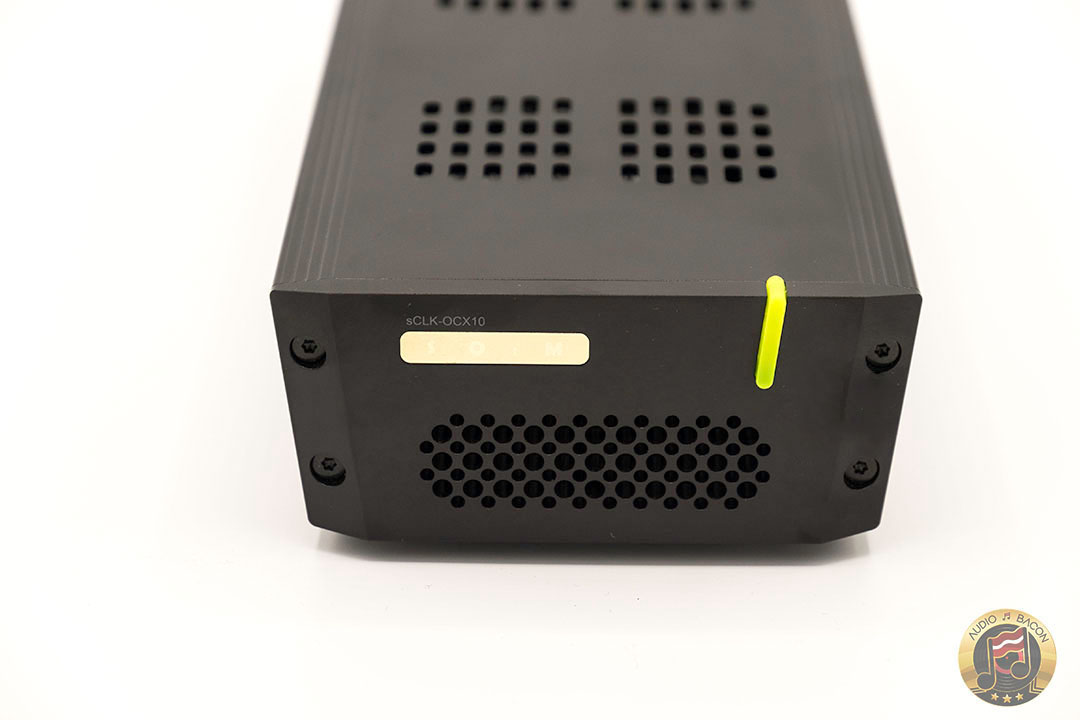
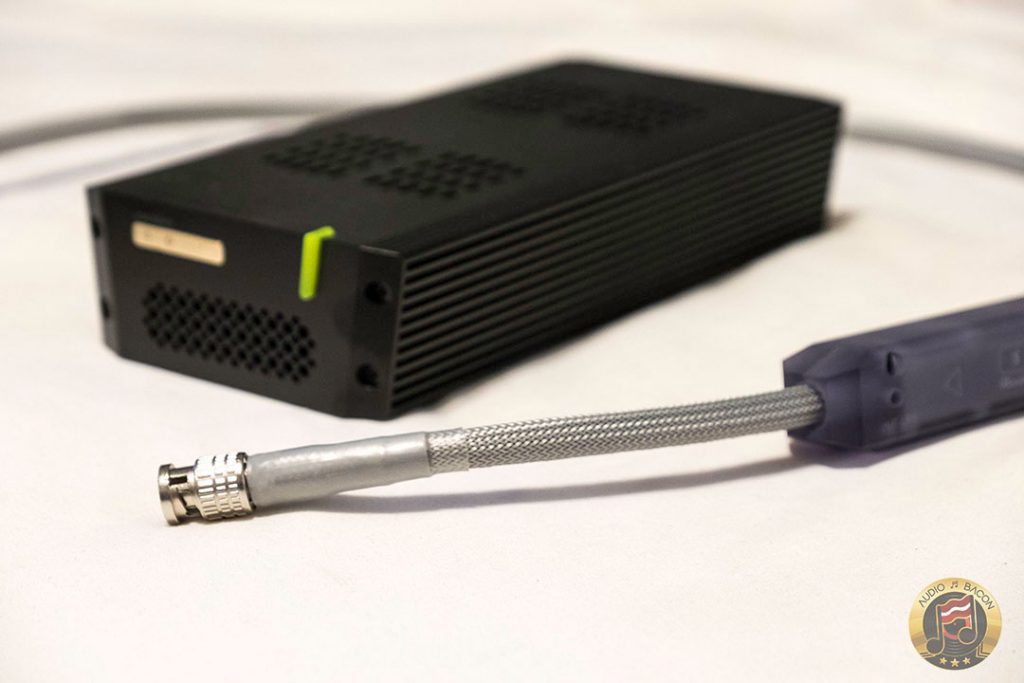
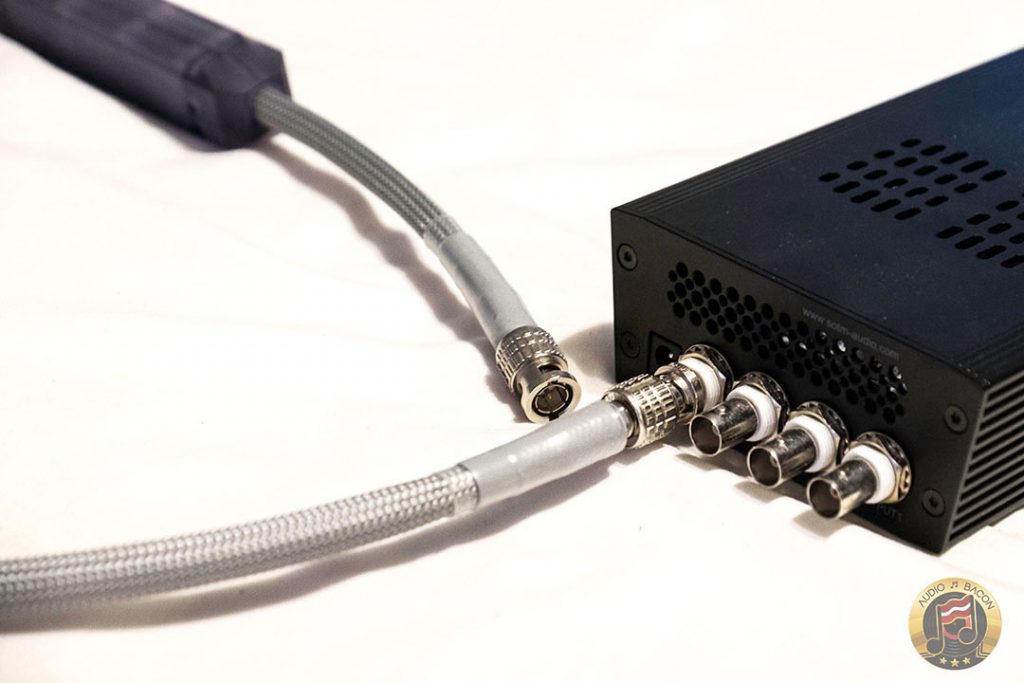





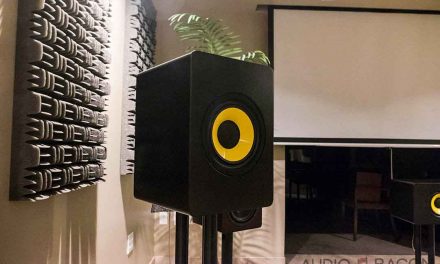
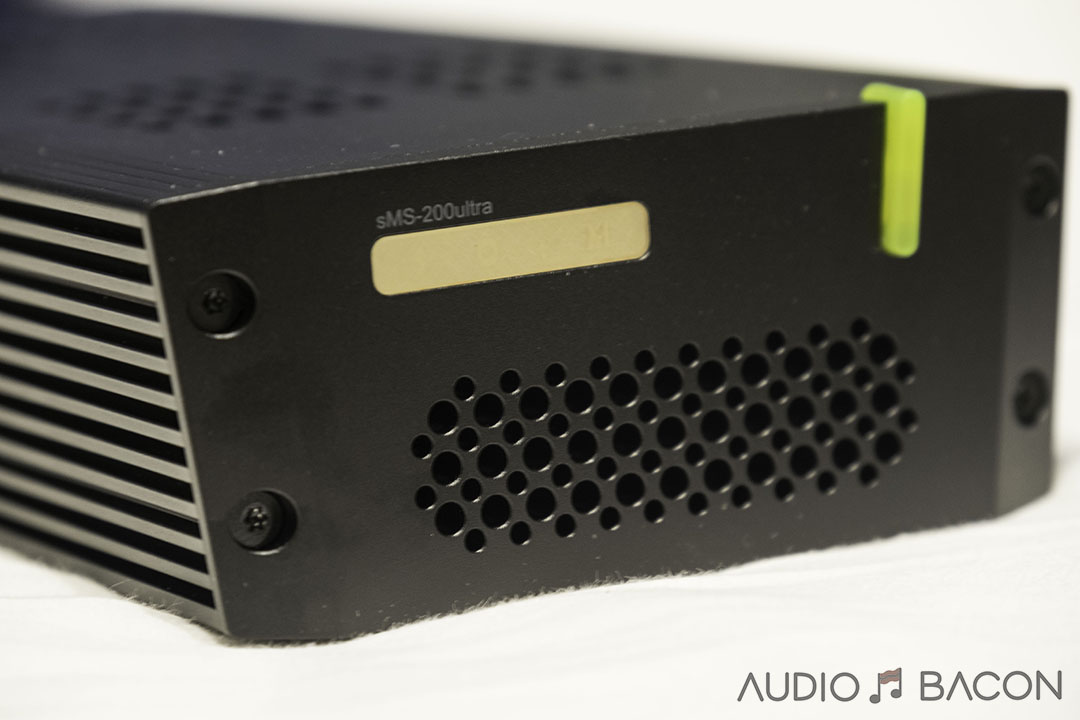
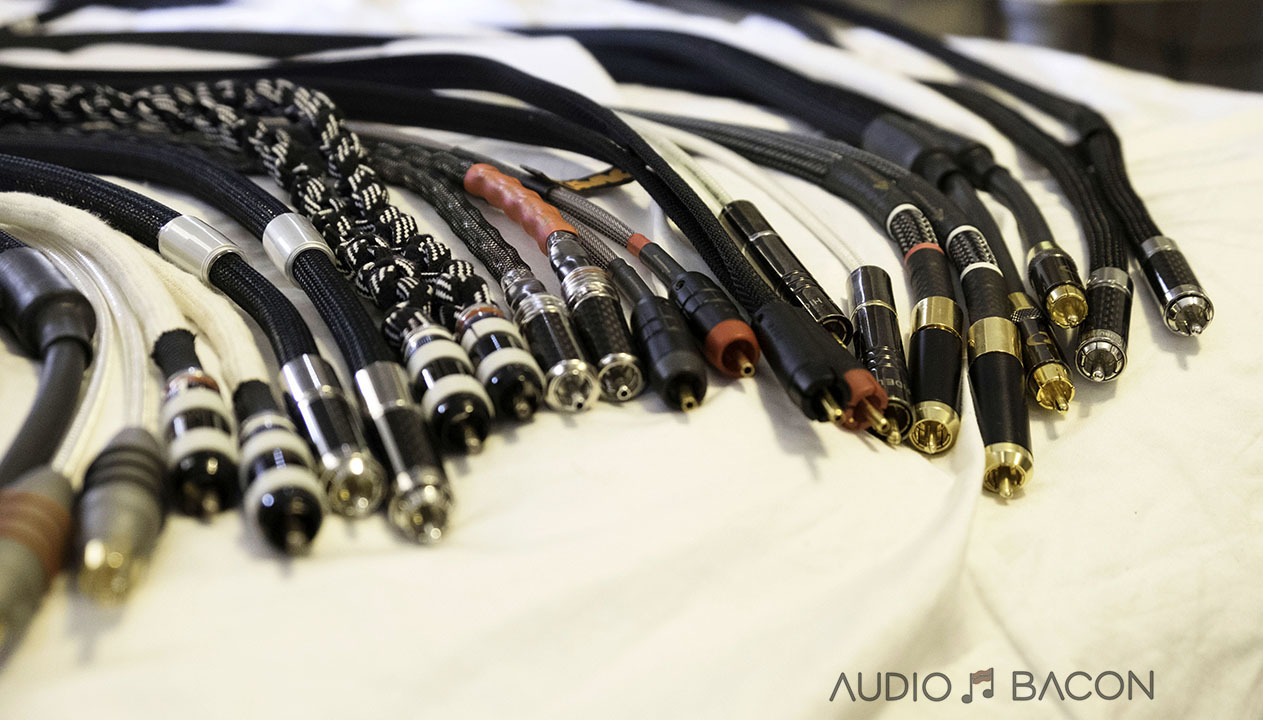


Thanks for this review! Would you be able to compare it to the Mutec REF10?
Mutec Ref10 is beter,
use a translator and read this
https://www.aktives-hoeren.de/viewtopic.php?f=23&t=4976&start=210
I purchased recently a denafrips terminator DAC and want to give a vintage Linn CD 12 a second life as transport only.
CD 12 has a sync input for normally synchronize with an external DAC but terminator does not have a clock output.
Would the use of a 10Mhz clock with cd12 bring still an improvment?